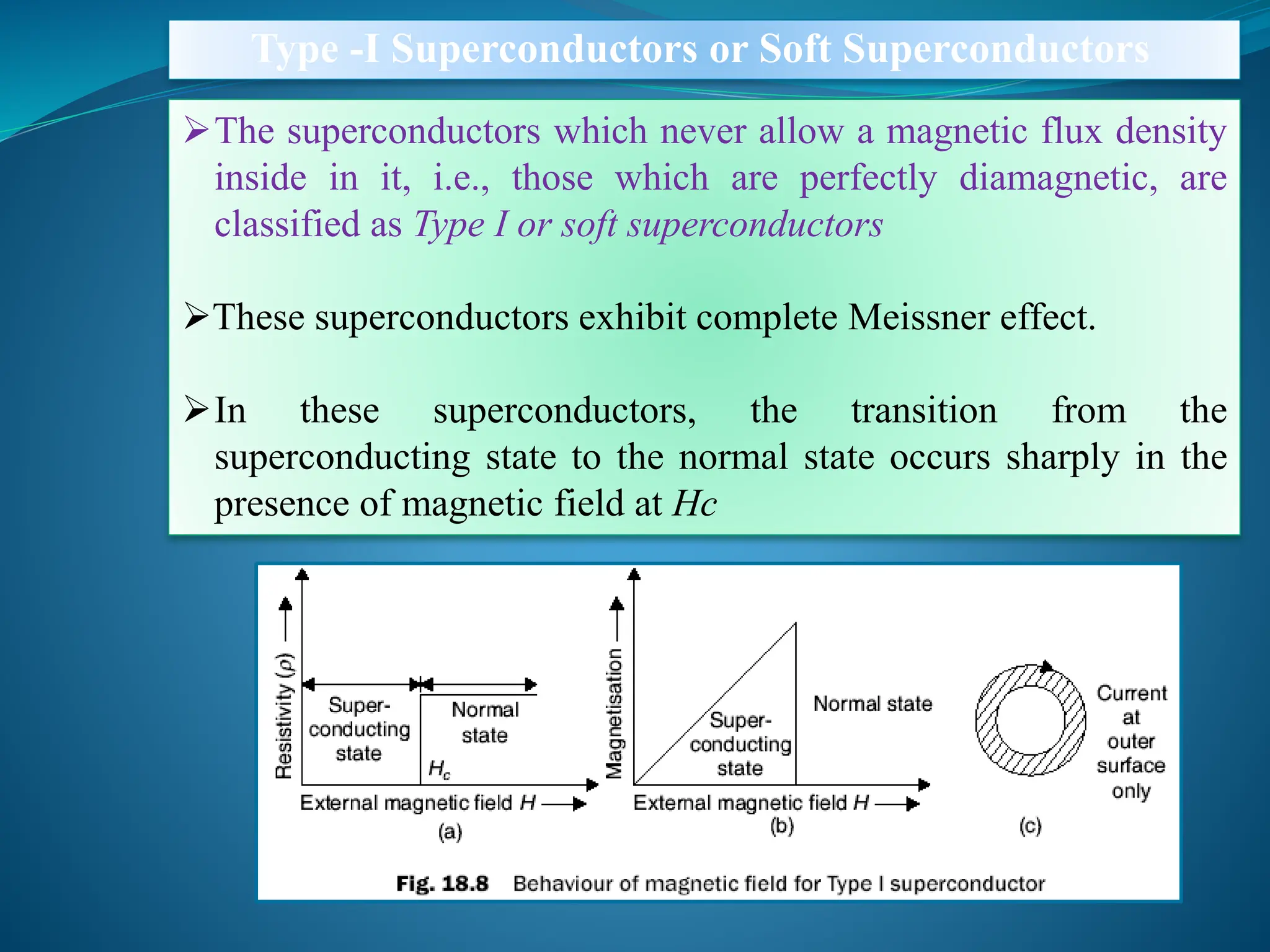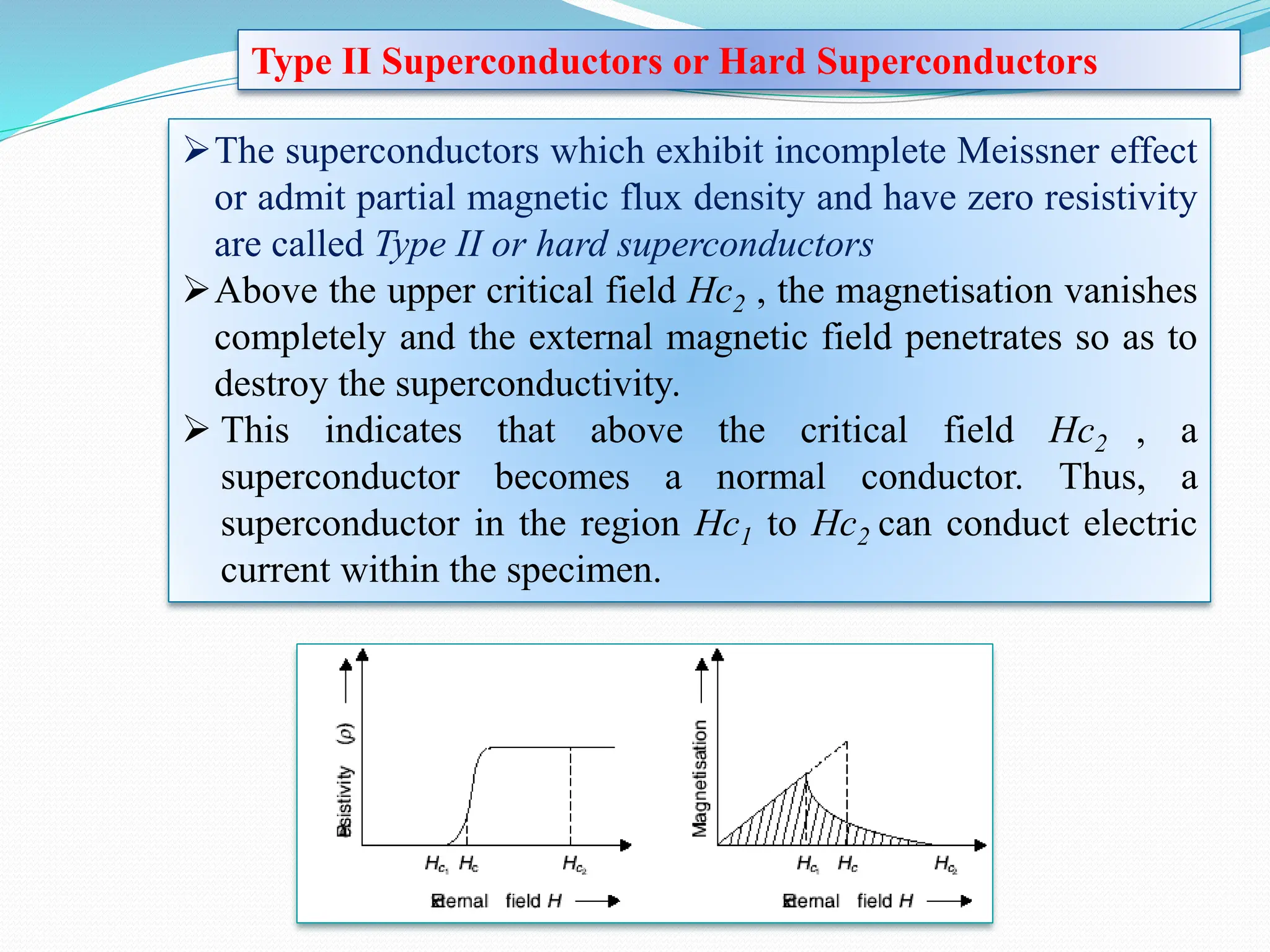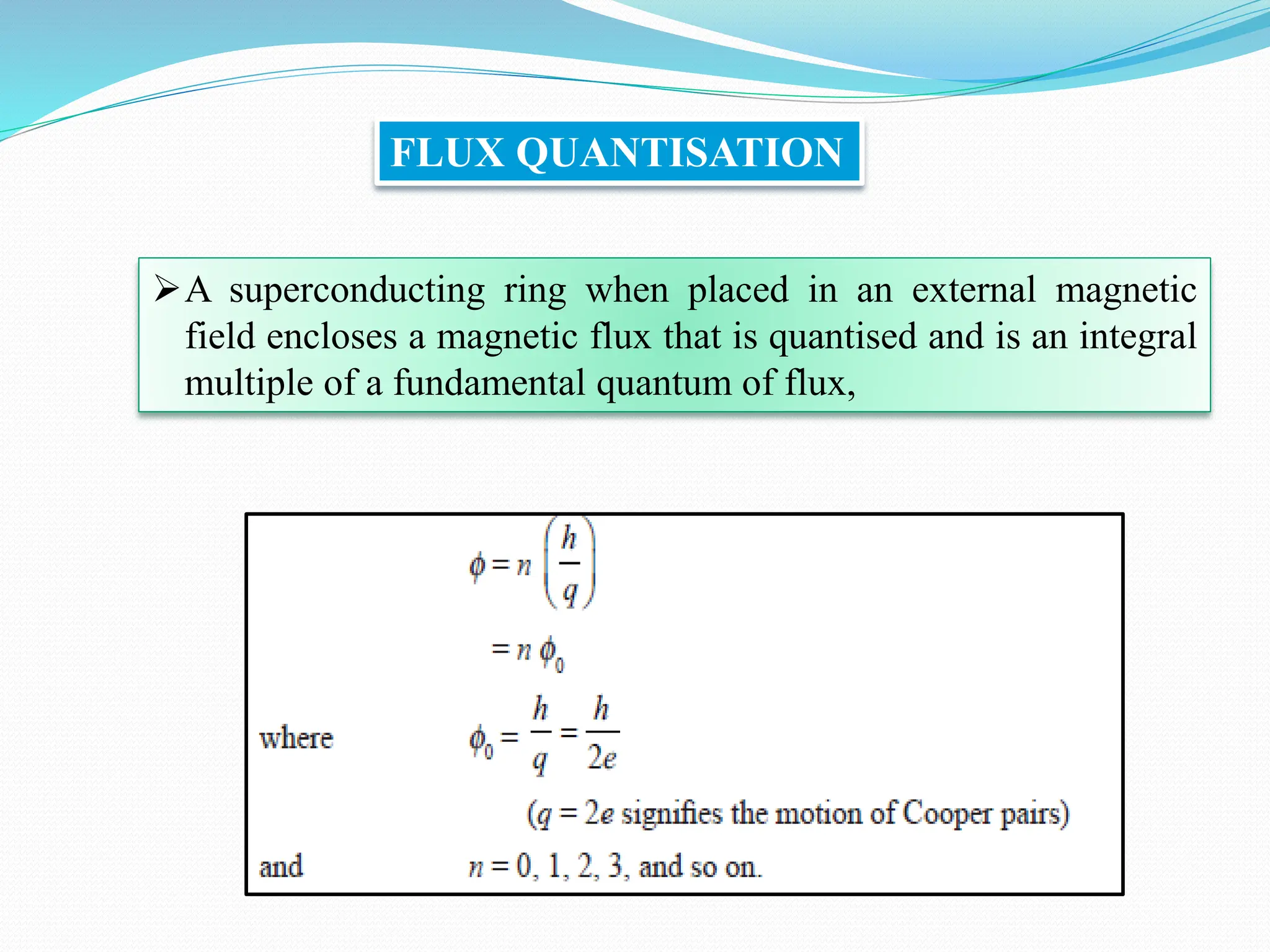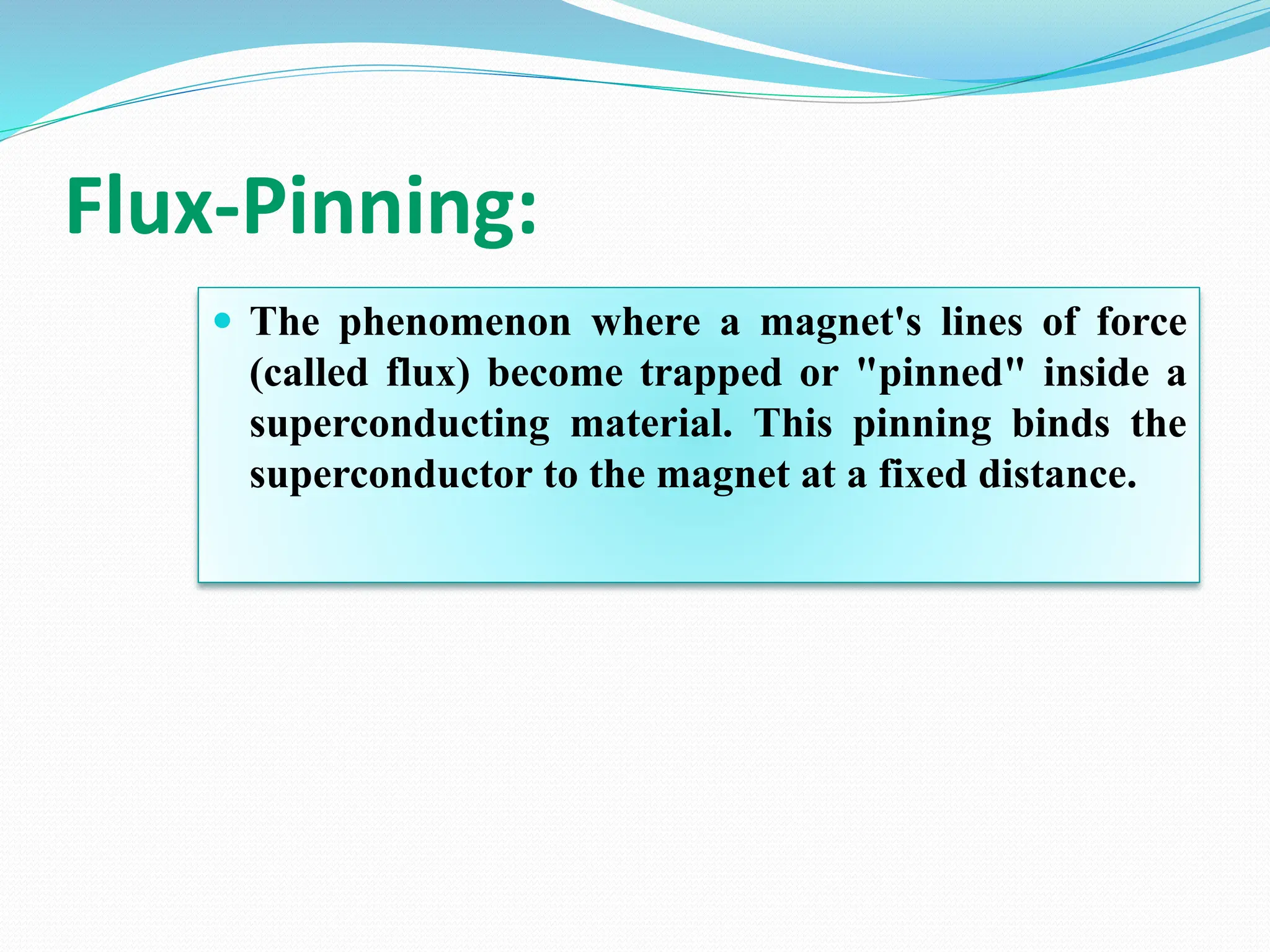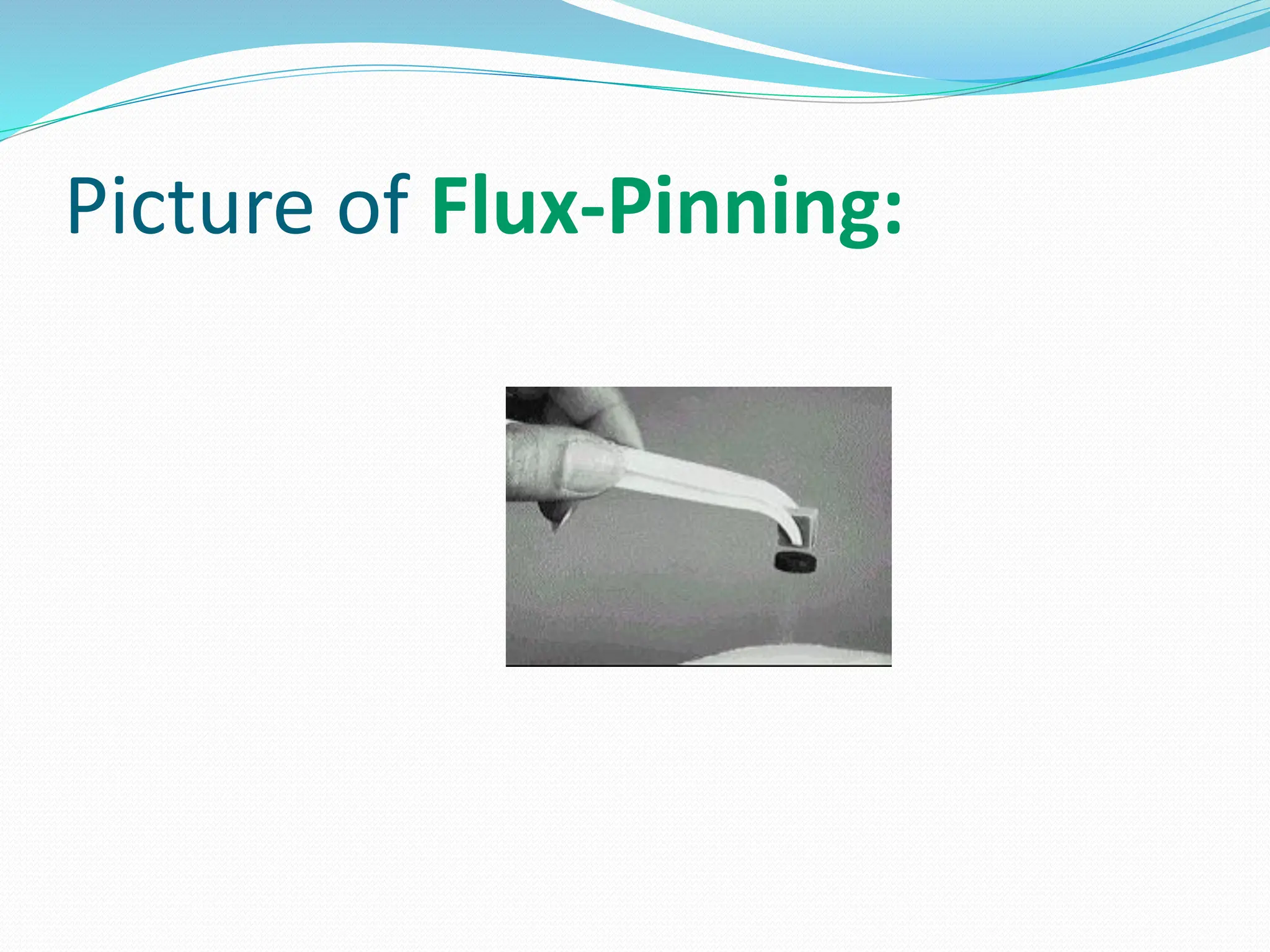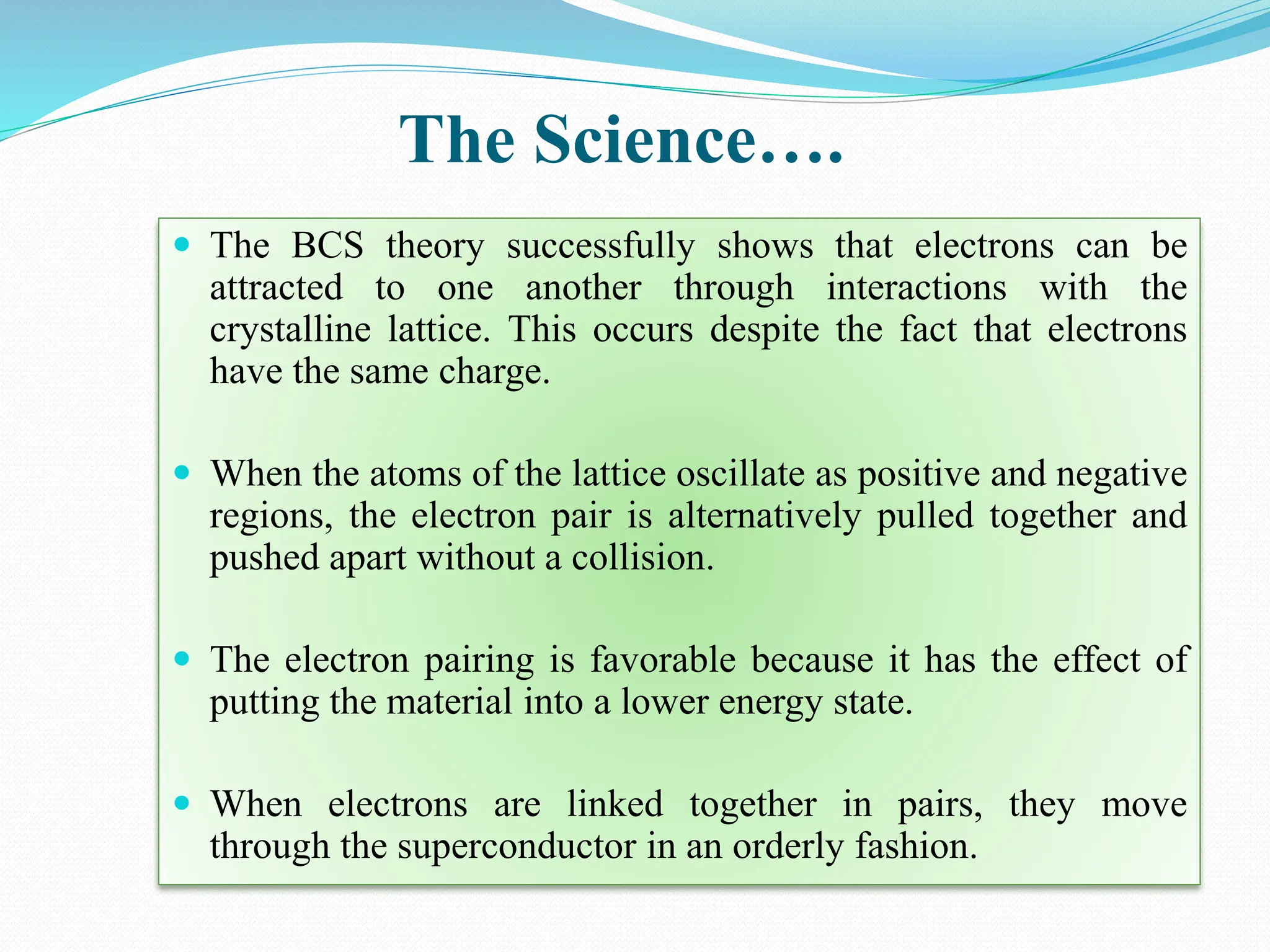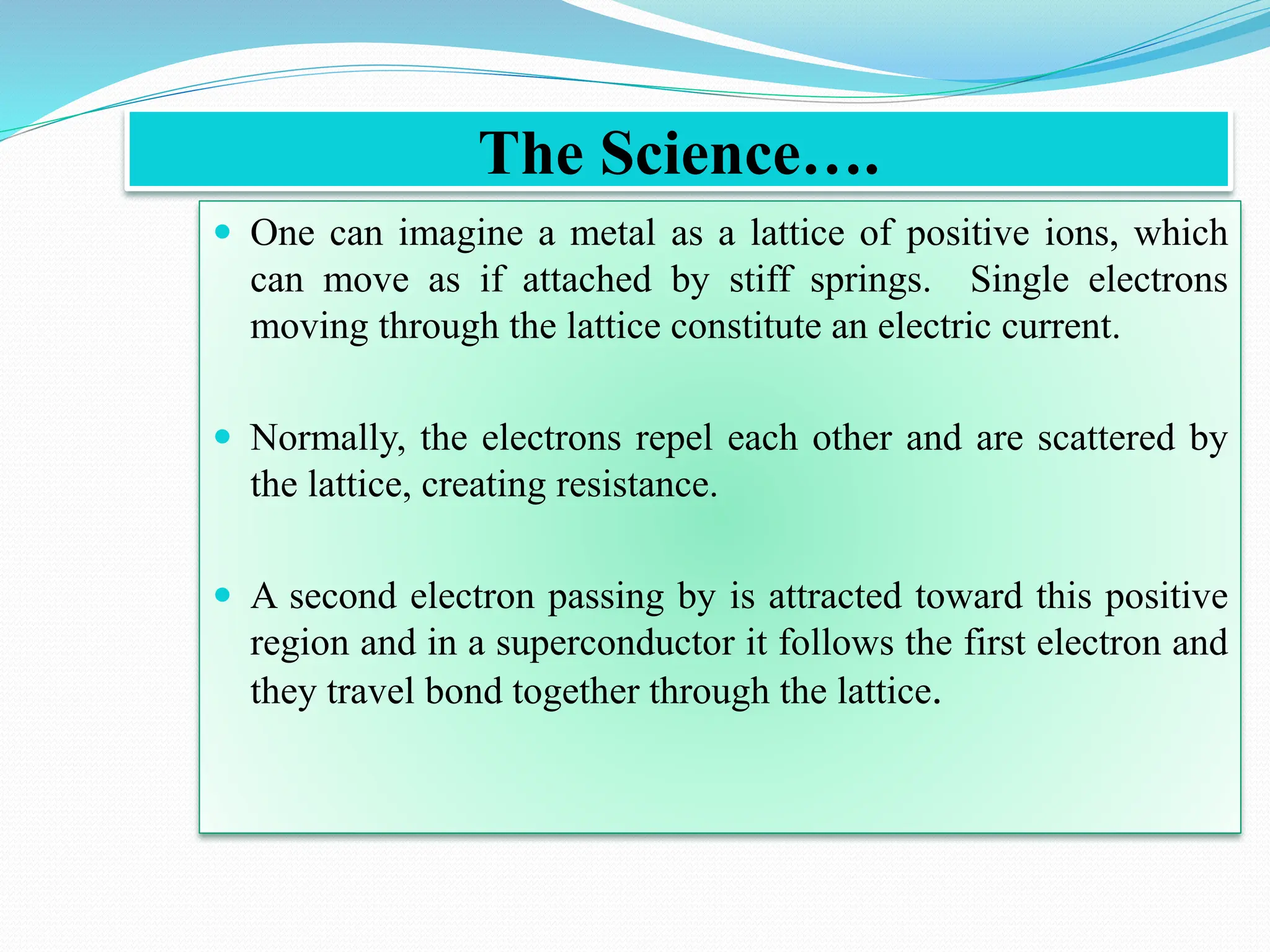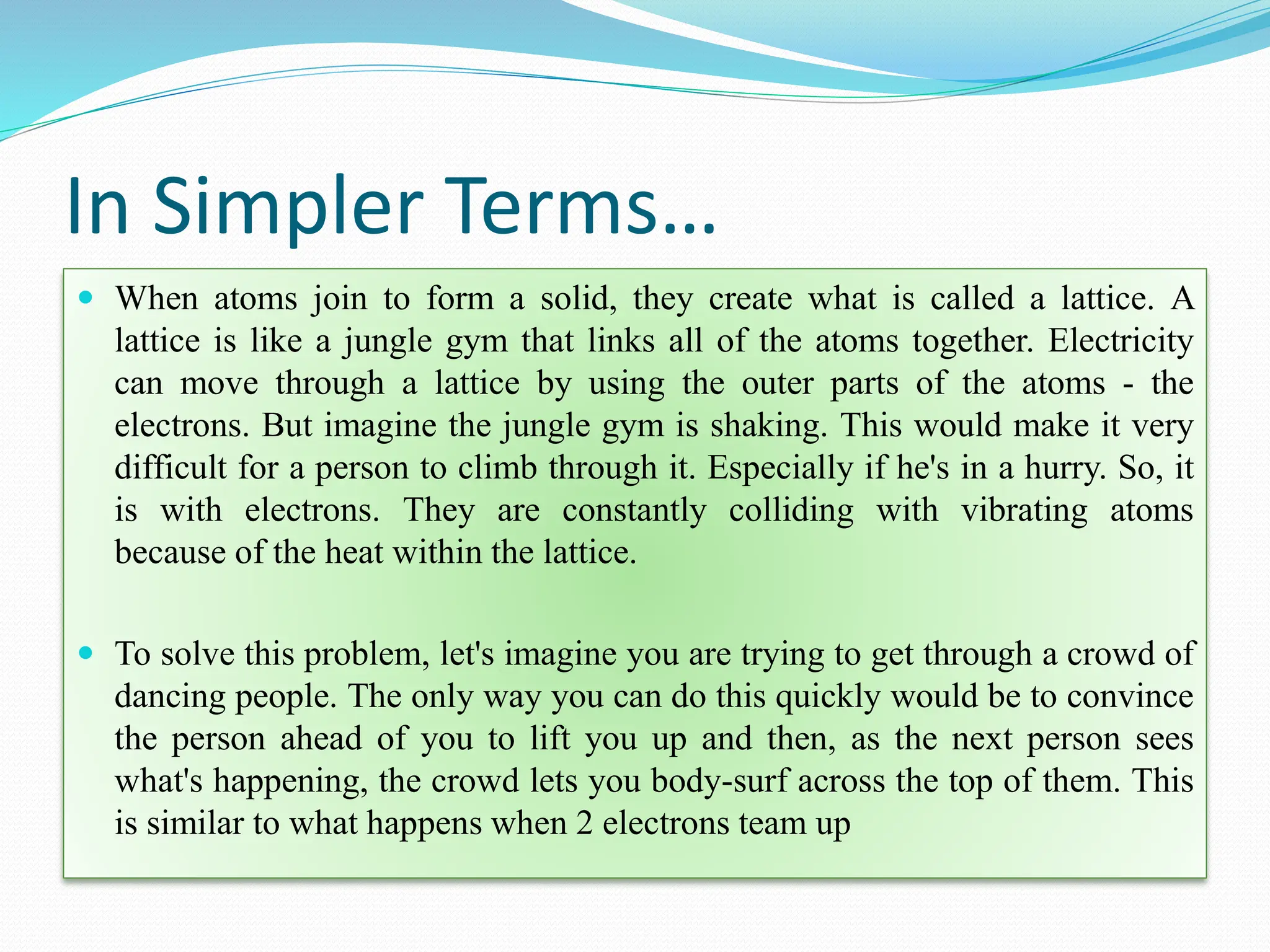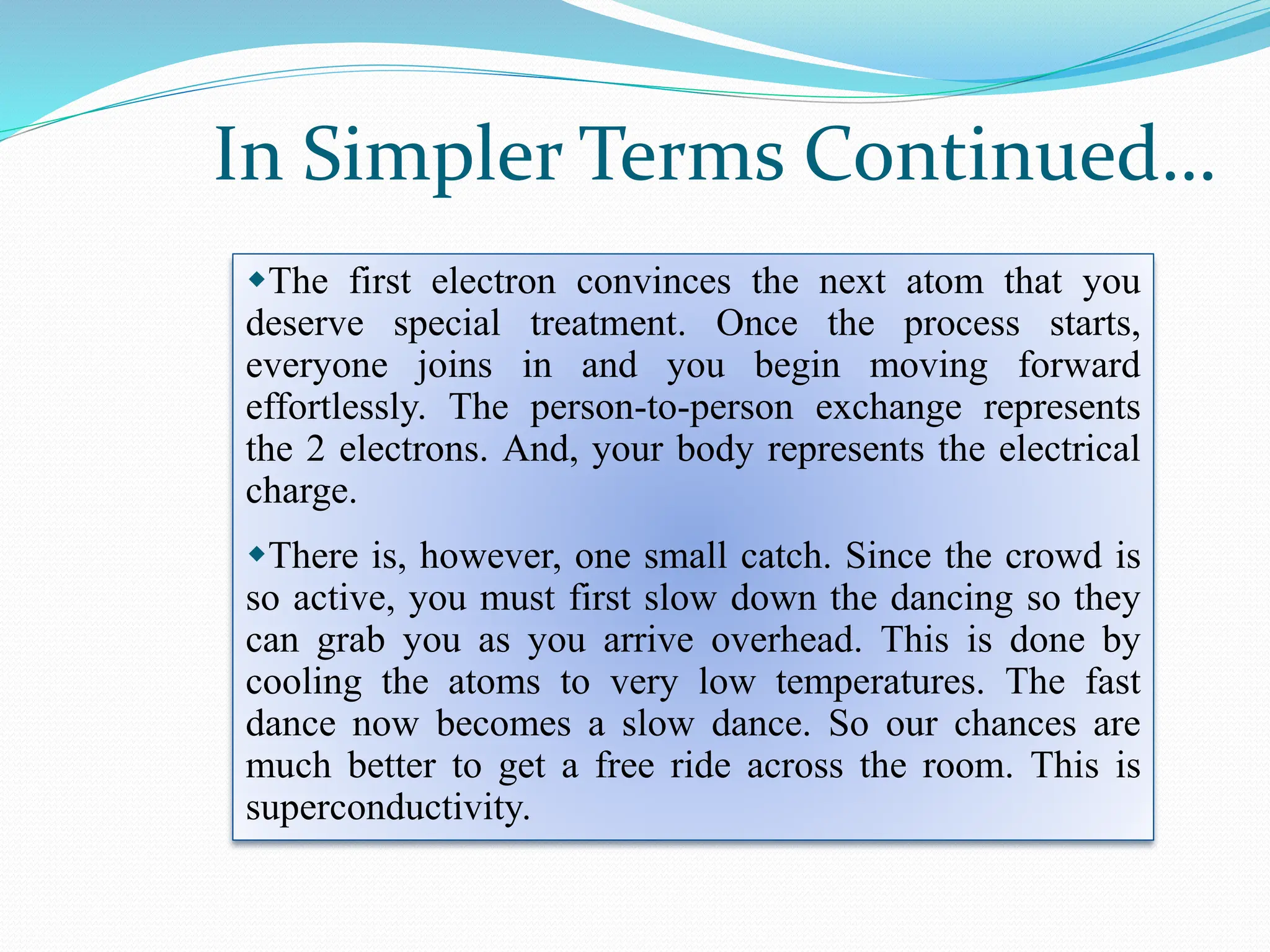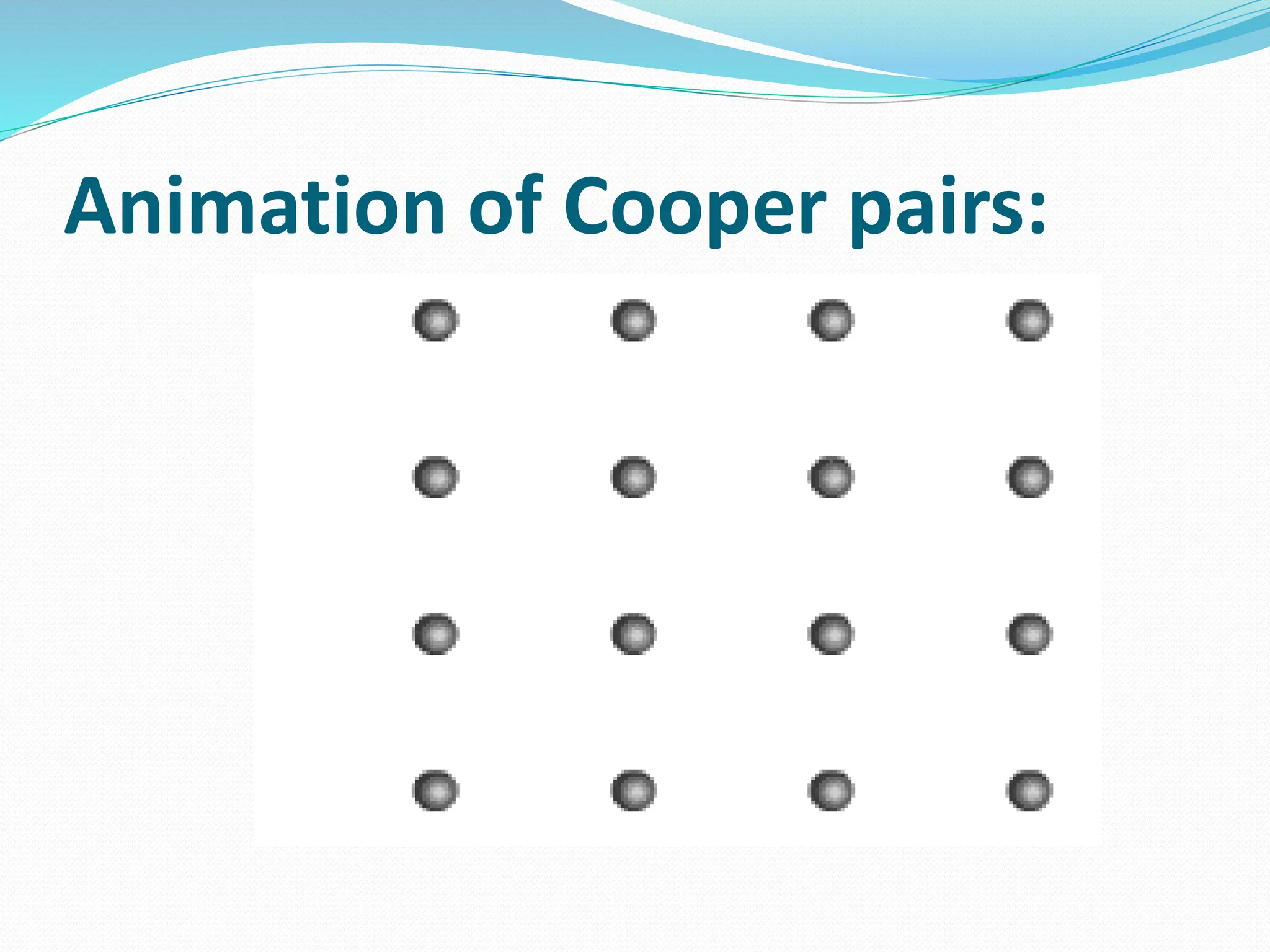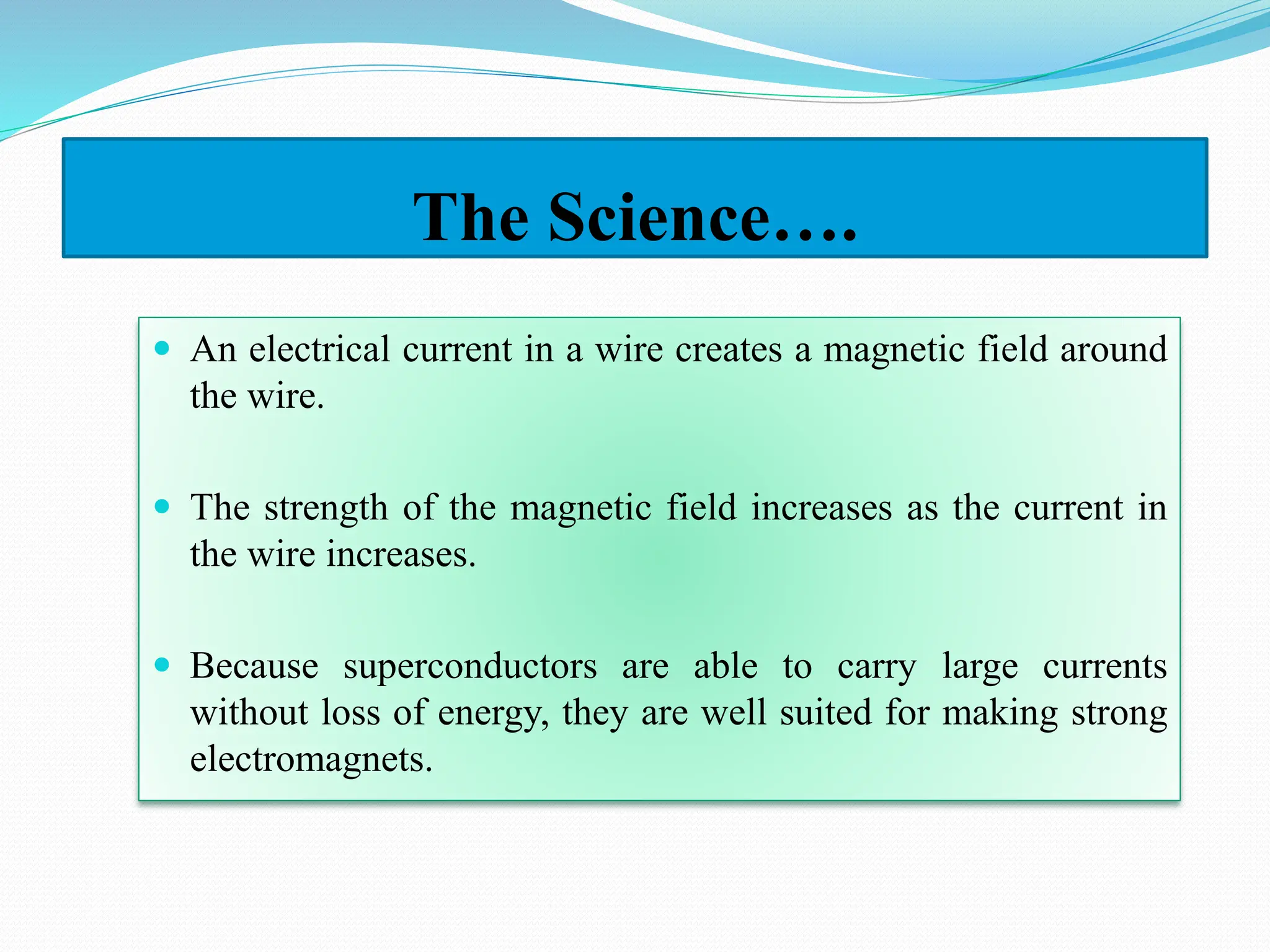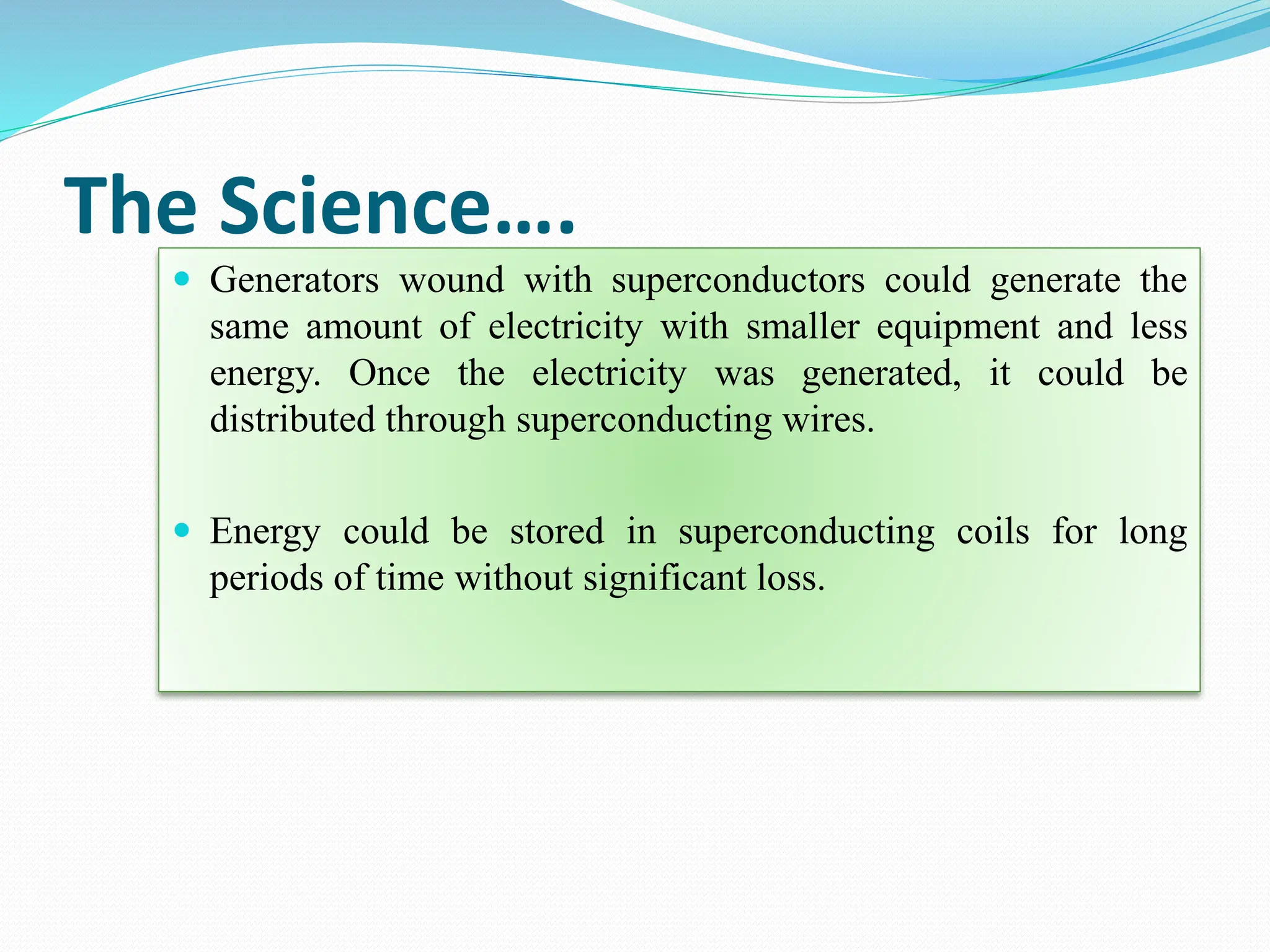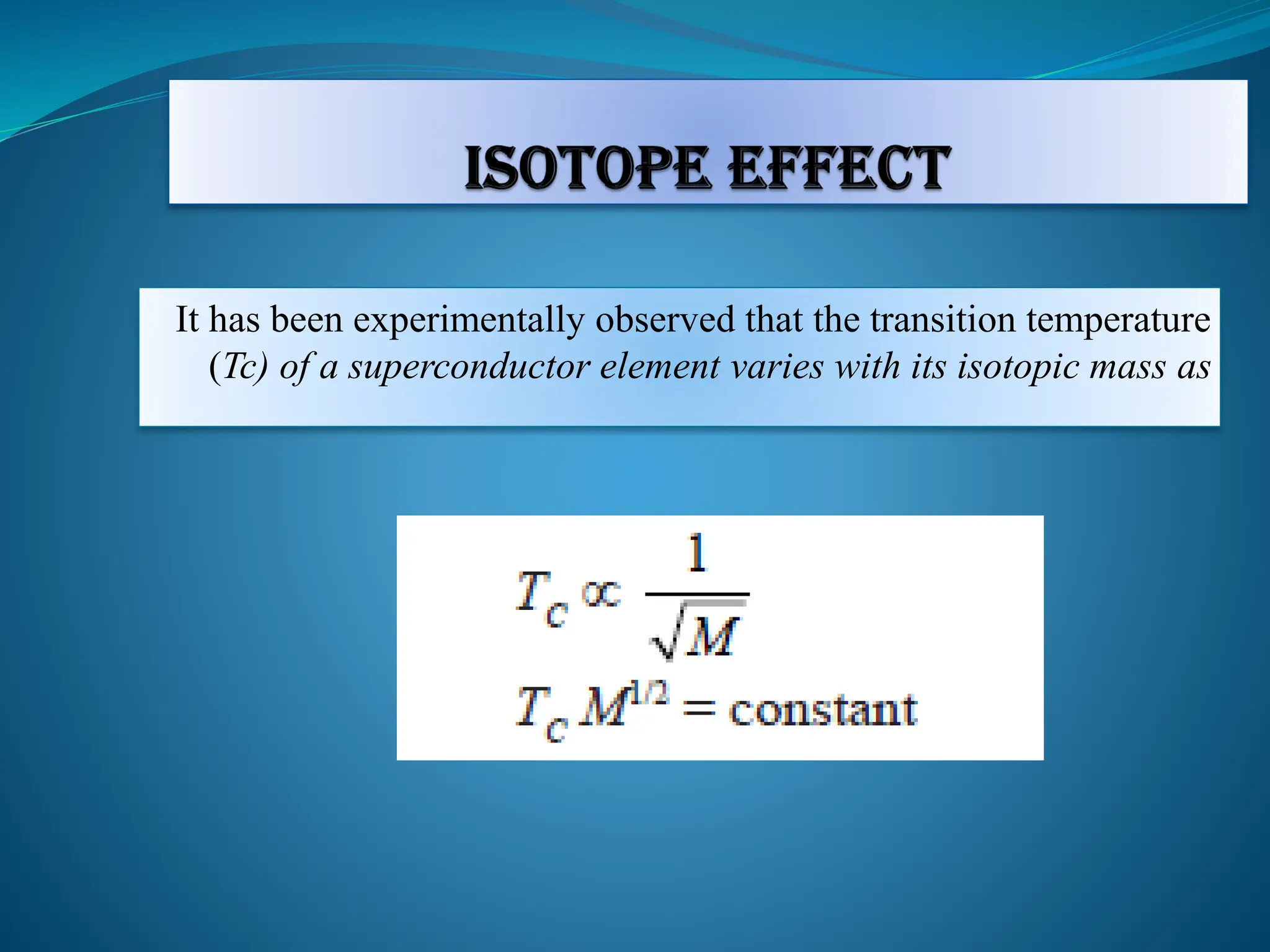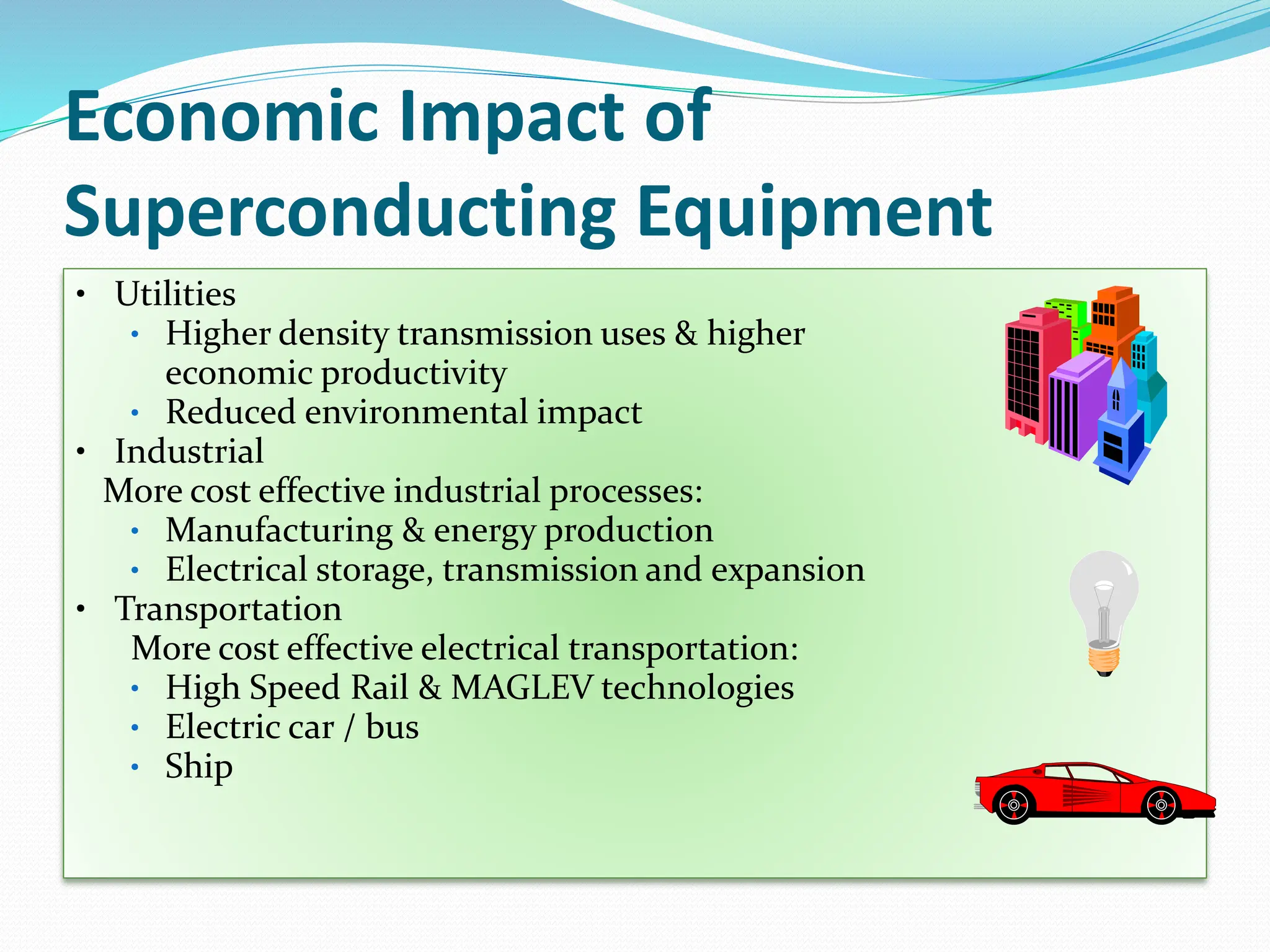Superconductivity is a phenomenon where certain materials exhibit zero electrical resistance at very low temperatures, first discovered by Heike Kamerlingh Onnes in 1911. The Meissner effect, which allows superconductors to exclude magnetic fields, and the BCS theory, explaining electron pairing leading to superconductivity, are key concepts in understanding this field. Today's applications range from medical imaging to power transmission, and ongoing research continues to unlock new technological possibilities.
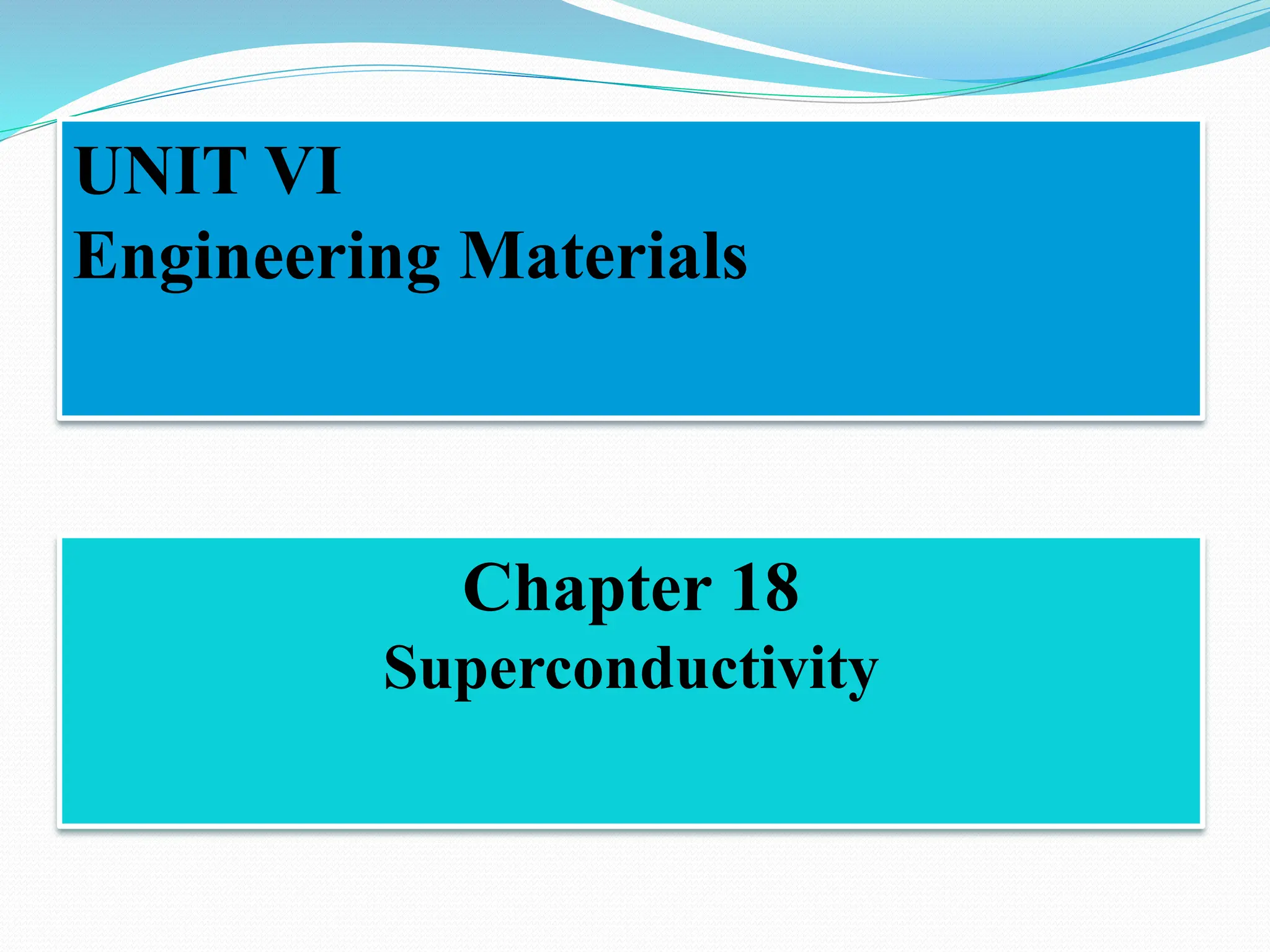
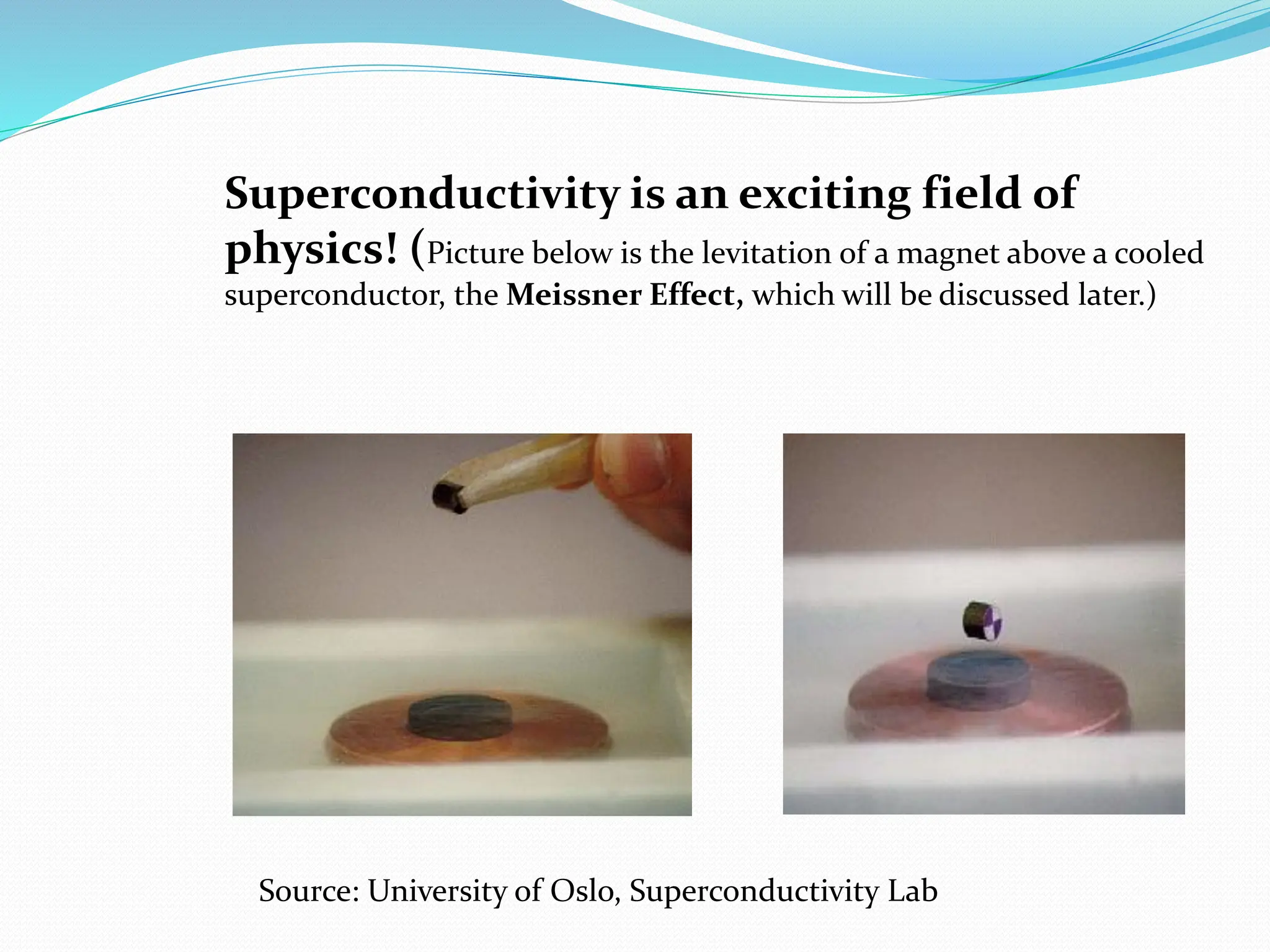









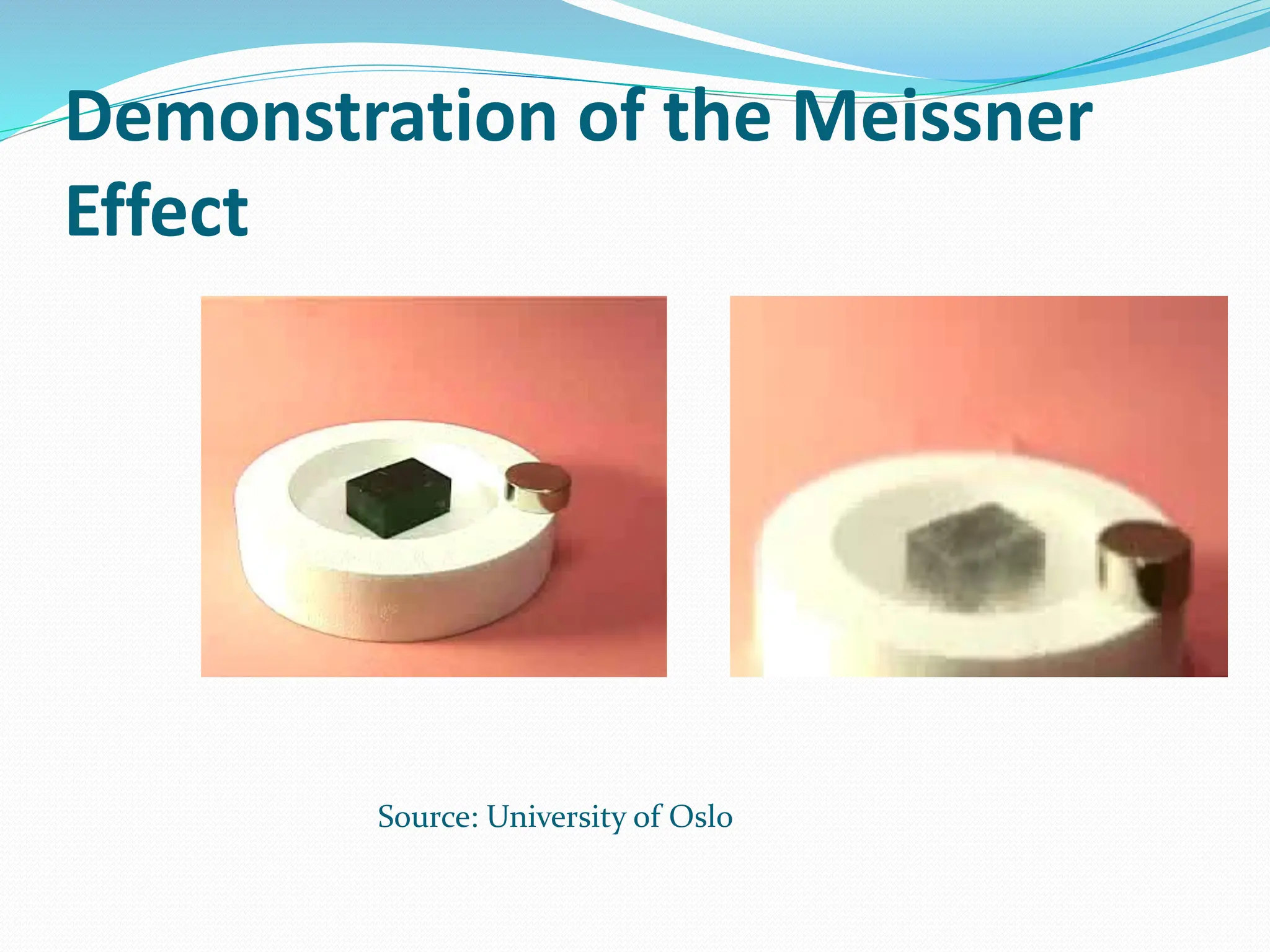
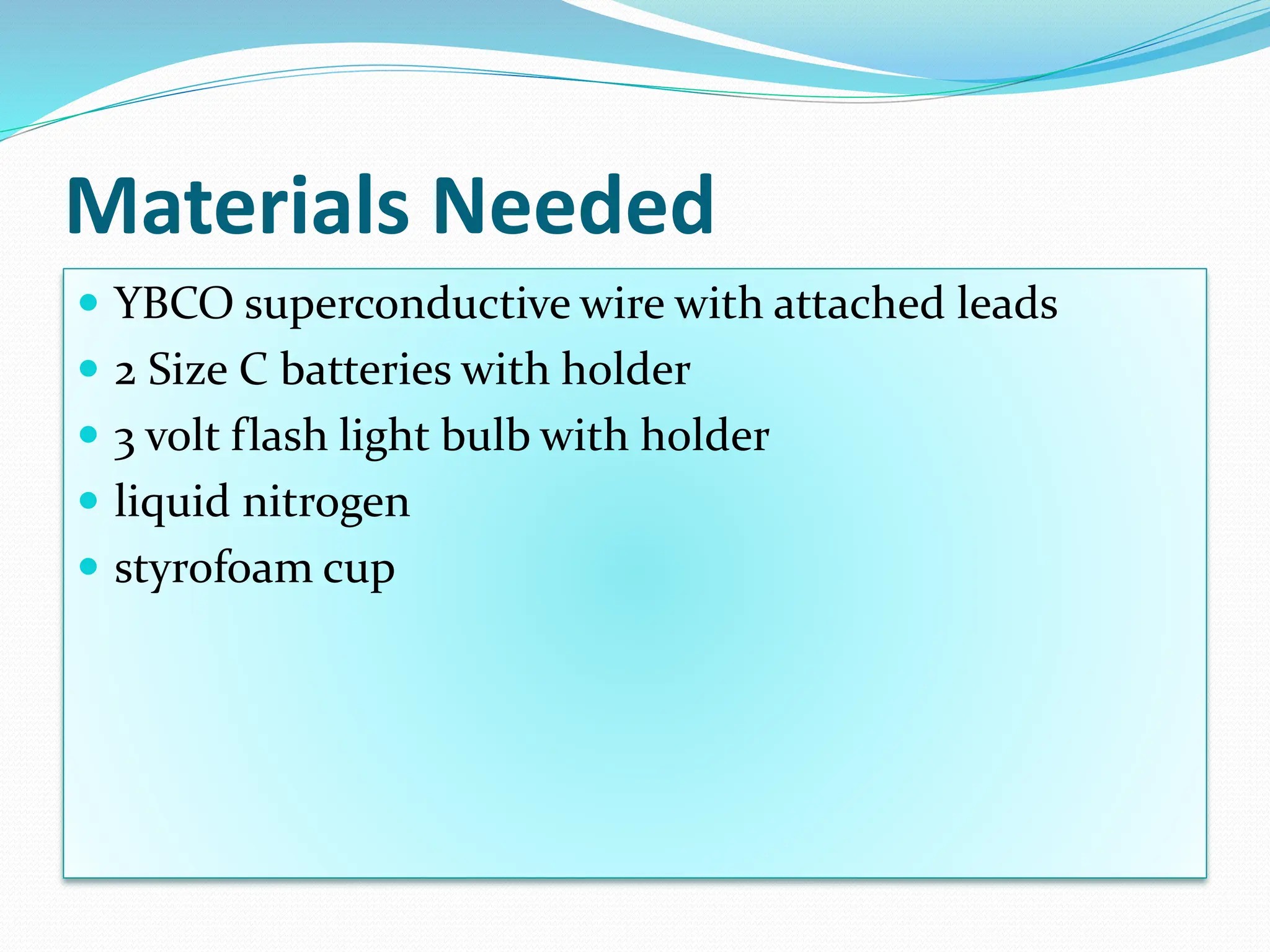


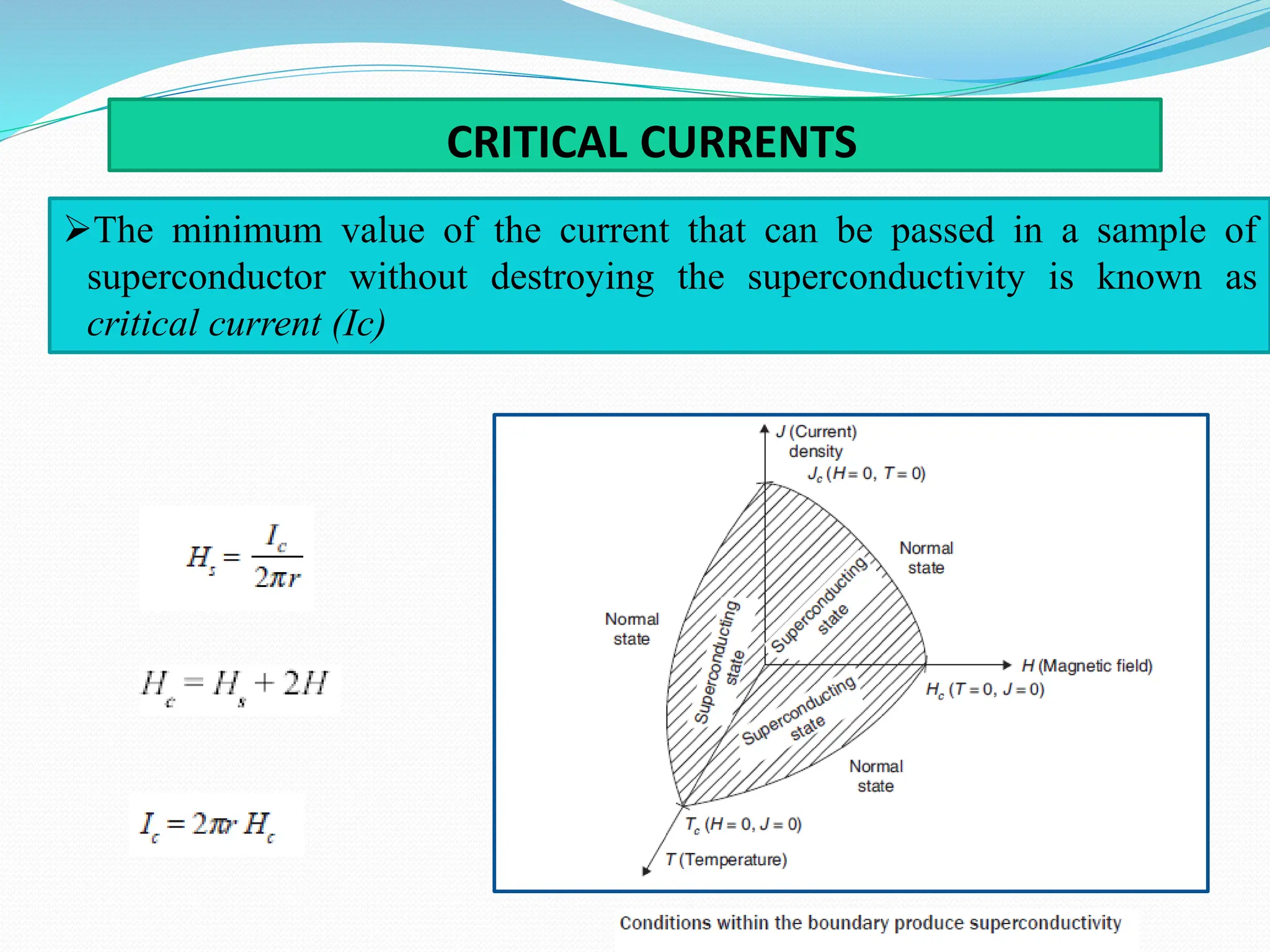

![PERSISTENT CURRENT:
➢When an electric current is set up in a superconductor, it can persist for a
long time even without any emf. Due to the presence of the persistent
current, a superconductor also produces a magnetic field.
➢An induced current can flow in a ring of superconducting material by
cooling it in the presence of a magnetic field below the transition
temperature and then by switching off the field [Fig. 18.7(a)].
➢When the field is switched off, the flux outside the ring disappears, but
it remains trapped inside the ring [Fig. 18.7(b)].](https://image.slidesharecdn.com/superconductivity-240424211923-e26fc518/75/superconductivity-in-engineering-materials-18-2048.jpg)

